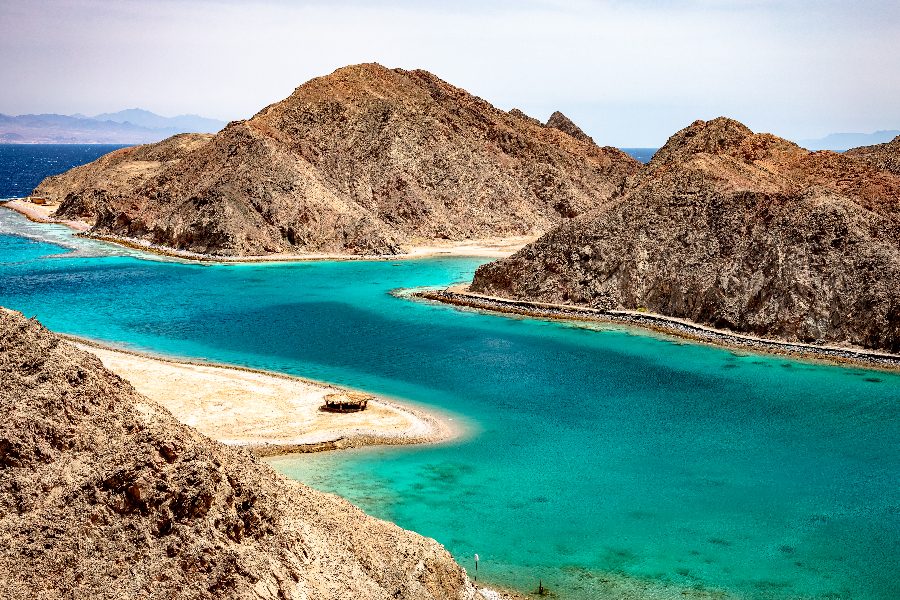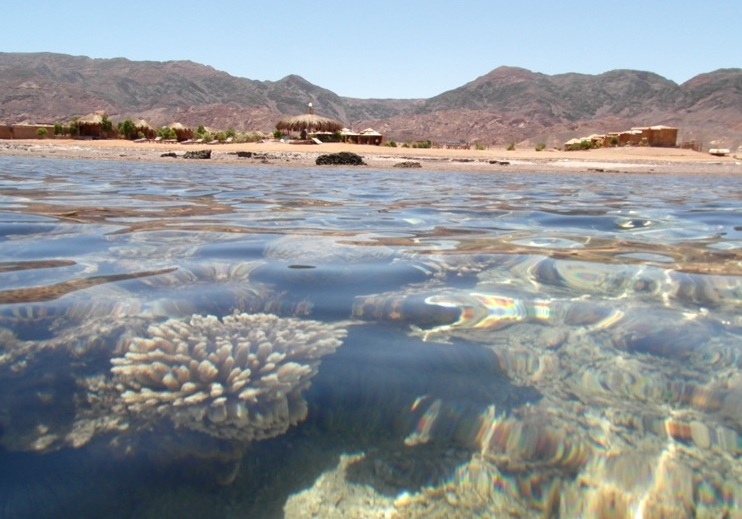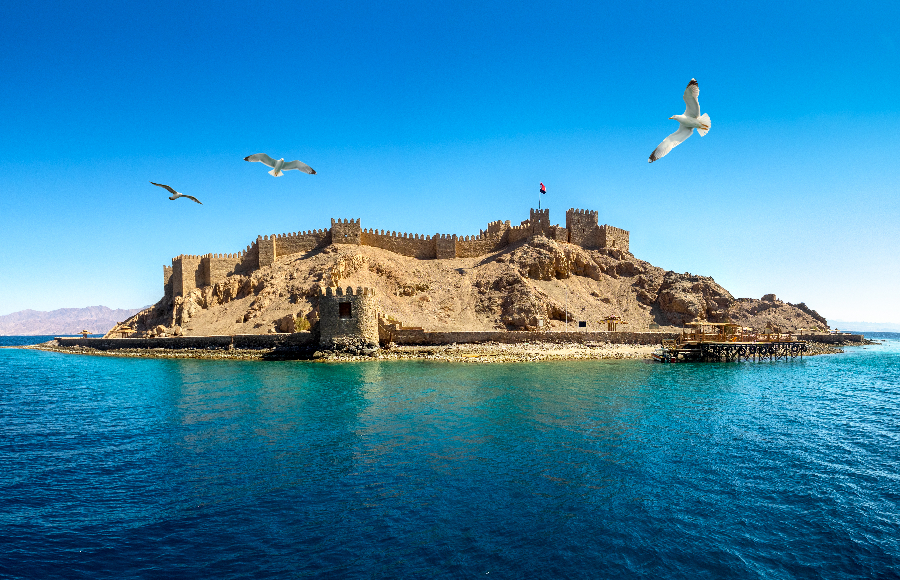As the summer months roll around, many Egyptians are planning their escape from the city’s hustle and bustle to the country’s coasts. As prices on the North Coast grow steeper year by year, those eager for a more active and affordable vacation can head to South Sinai.
With a stunning variety of beach getaways, the Southern tip of the peninsula offers much to choose from. Below is a guide to some of its most dynamic and budget-friendly destinations.
Dahab
The coastal town of Dahab, five hundred kilometers east of Cairo, caters to the adventurous traveler and mellow vacationer alike. Grown from a modest fishing village to a thriving tourist destination, it is a great middle ground for large groups of friends with diverging interests.
Transportation
From Cairo, Dahab can be reached by a seven hour car ride or eight-to-ten hour bus. The nearest airport is the Sharm El Sheikh international airport, which is two hours away by car.
Activities
Dahab’s touristic walkway stretches along the coast from the Bedouin village of Assalah in the North, to the Mashraba area in the south. The central portion of the walkway and surrounding streets, known as the lighthouse area, houses the largest concentration of diving centers and restaurants, many of which uphold the town’s plastic-free initiative.
For more seasoned divers, unmissable stops include the world-famous Blue Hole, and the lesser-known Three Pools, which comprises three natural pools with sandy floors, interconnected by vibrant coral gardens. Another overlooked diving site is Gabr el Bint (‘Grave of the Girl’), which takes its visitors on a sixty meter deep journey through ravines and caves.
Two local hiking and rock climbing destinations are the Gnai and Tuwailat valleys. Both can be explored by car or on foot, along several trails of varying difficulty. They are great sites for overnight camping, and sometimes host parties and organized events in the evenings.
For the more laid back visitor, a short walk away from the southern edge of the walkway is Dahab’s ‘Laguna’: a mostly virgin stretch of beach shielded by the mountains from the currents of the Gulf of Aqaba. The area also houses several natural lagoons of varying depths, where swimmers enjoy an unobstructed view of the mountains.
Accommodation
Dahab houses numerous accommodation options ranging from luxury hotels to modest camps. Luxury hotels are concentrated on the bank of the Laguna opposite to the walkway. Camps and youth hostels are spread out along the commercial walkway and cheaper to the north. For large groups, renting an apartment in the Assalah area is often the most cost-effective option.
Ras Abu Galum and the Blue Lagoon
Fifteen kilometers north of Dahab is the natural protectorate of Abu Galum, where cell reception and electricity are sparse, and natural sights are unrivaled. Though most people visit it on a day trip from Dahab, a longer stay is ideal for those seeking a momentary disconnect from city life.
Transportation
Travelers can access the reserve by taking a fifteen minute speedboat from the Blue Hole diving site in Dahab, riding a camel, or making the scenic two-hour journey on foot.
Activities
Abu Galum houses vibrant and well-preserved coral reefs along its shoreline, making it a great destination for snorkelers and divers, with a few places to rent equipment on site. Those more eager for land than water sports can also hike the mountains bordering the shoreline.
Ten kilometers farther north is the Blue Lagoon — a natural pond of clear turquoise water, separated from the Gulf of Aqaba by a thin stretch of rock and sand. The lagoon is accessible by foot or pickup truck.
Its calm waters make it a perfect swimming spot, as well as an attractive kitesurfing destination. At night, the area offers an unparalleled star-gazing experience, owing to the near-total lack of light pollution.
Accommodation
The only form of accommodation available is camps, which are for the most part owned by locals. They are usually more modest than their counterparts in Dahab: electricity and cell reception are sparse, so visitors should be willing to do away with their phones for a couple of days.
Nuweiba and Ras Shitan
Seventy kilometers north of Dahab, tucked between the Sinai mountains and the Gulf of Aqaba, is the town of Nuweiba. The surrounding area is known for its many hotels, resorts — and most famously, eco-friendly camps, making it a great destination for nature naturism.
Transportation
Nuweiba is a six hour car ride from Cairo, or seven to eight hours by bus. There are also buses from Dahab and Sharm El Sheikh International Airport.
Activities
Twenty kilometers north of is Ras Shitan, historically known as ‘Ras El Shateen’ (cape of the two beaches) because of the shape of the mountain which splits it into two beaches. Abundant in coral reefs and diverse marine life, it houses several camps and has long been a hotspot for divers and snorkeling enthusiasts.
There are also several hiking spots in the area, including, notably, the Colored Canyon: a maze of colorful rock formations, 30 meters deep and 800 meters long, formed over millions of years from the receding of the Red Sea and erosion of water upon sand and limestone.
A less popular but equally beautiful hiking destination is Wadi El Weshwash. Buried deep in the mountains, the valley is home to a natural rainwater spring, to which visitors ascend by a ninety minute hike and brief rope climbing exercise, before diving in at the outcome of the journey.
Accommodation
While there are hotels and resorts in the area, the most popular form of accommodation in Nuweiba are camps and ecolodges. Most are equipped with communal bathrooms, kitchens, and seating areas, encouraging interaction among visitors. Additionally, some camps periodically host yoga, art, and other courses and retreats.
Taba
Seventy kilometers north from Nuweiba, near the Egyptian-Israeli border is the town of Taba, home to some of Sinai’s richest natural and historical heritage sites.
Transportation
Taba can be accessed from Cairo by a five hour car ride, or a six to seven hour bus ride. The drive from Nuweiba is a little under one hour, and two hours and a half from Sharm El Sheikh.
Activities
Taba is rich in history and home to several heritage sites, the best known of which is Castle Zaman, a medieval fortress perched over a cliff, halfway between Taba and Nuweiba.
Another historical gem is Pharaohs Island, also known as Coral Island, on the northwestern tip of the Gulf of Aqaba. The island, which was once a Phoenician port, was captured by Salah El Din Al Ayubi in the twelfth century and now houses one of the legendary sultan’s citadels, renovated in 2012.
Snorkelers and divers can also explore the coral reef lining the island’s shoreline, or head farther South to the diving paradise of Fjord Bay, home to a 24 meter deep coral valley. Fjord Bay is located just 7km from the port of Eilat, Egypt’s busiest border crossing into Israel, from where one can also see the coastlines of Saudi Arabia and Jordan.
Accommodation
Though Taba has traditionally been a destination for resort tourism, in recent years, camps and ecolodges have increasingly started to flourish in the surrounding area, allowing visitors to enjoy its rich mixture of history, heritage, and natural sights at a more affordable cost.











Comments (63)
[…] A Guide to South Sinai’s Beach Getaways […]
[…] post A Guide to South Sinai’s Beach Getaways first appeared on Egyptian […]